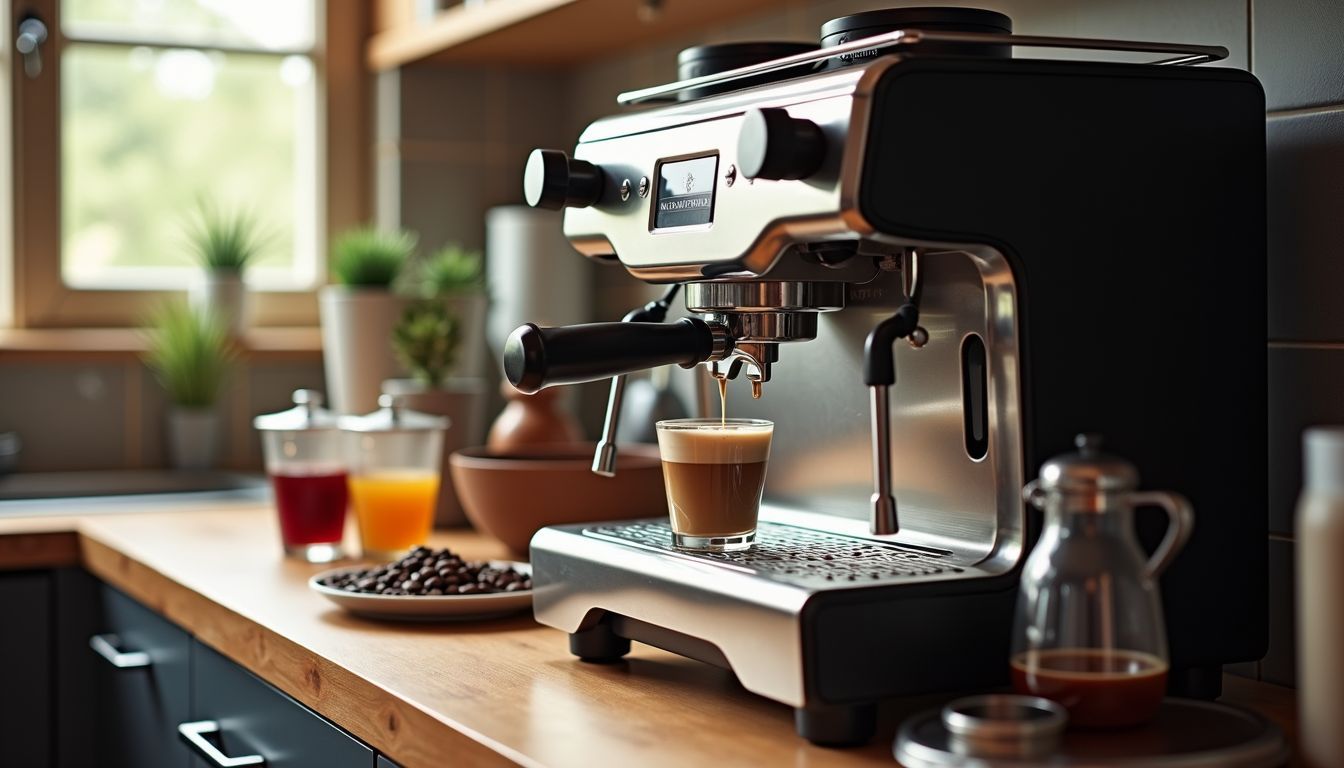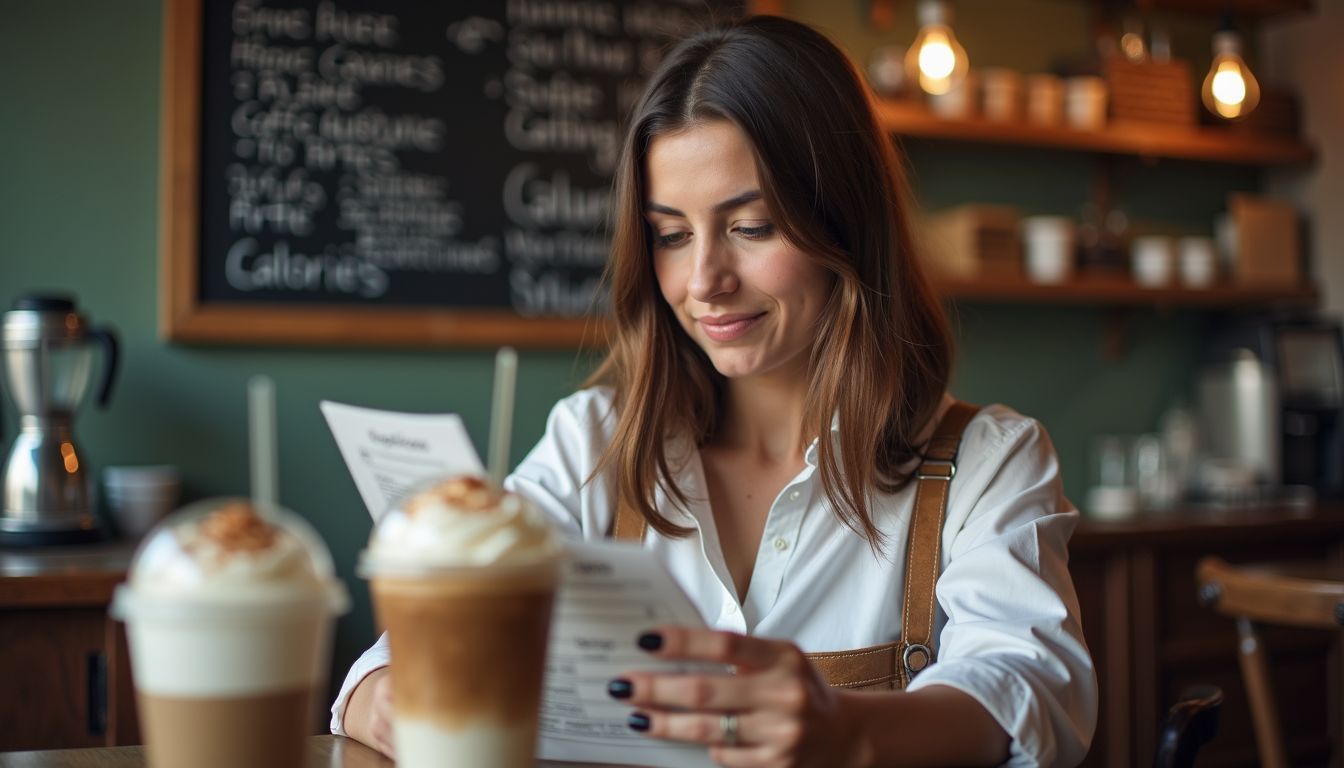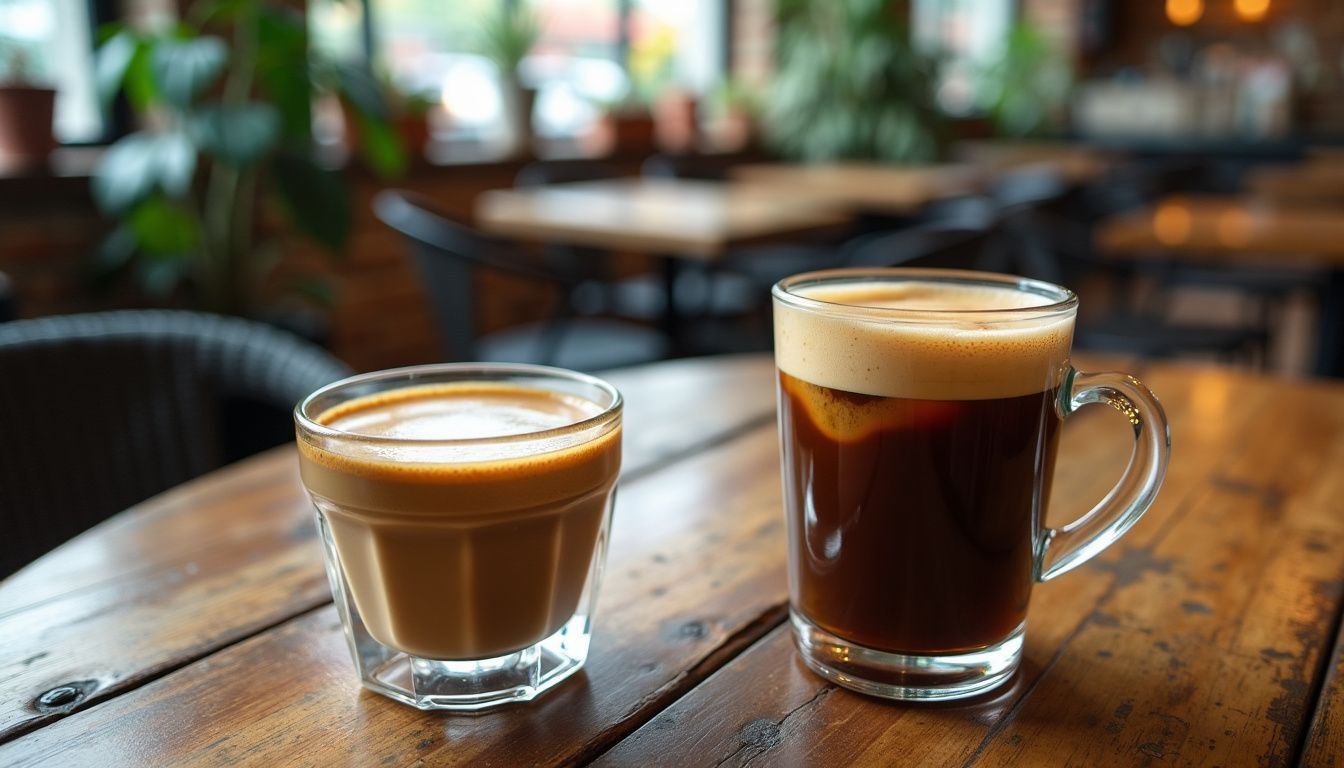Latte Vs Vietnamese Coffee: A Tasty Showdown
Latte and Vietnamese coffee offer distinct flavors, preparation methods, and cultural significance. If you seek a creamy, smooth texture, the latte might be your choice, made with Arabica beans for a mild and balanced flavour.
On the other hand, Vietnamese coffee delivers a bold, strong experience, thanks to its use of Robusta beans, which provide higher caffeine content and a more robust taste.
Both drinks reflect their cultural roots—latte, often associated with European coffee traditions, and Vietnamese coffee, known for being served with condensed milk and enjoyed both hot and iced. The comparison covers brewing methods and health aspects, such as how caffeine levels differ between the two.
Brewing Methods: Latte vs Vietnamese Coffee
Brewing methods set these drinks apart. Lattes need an espresso machine, while Vietnamese coffee uses a phin filter.
Phin Filter Method for Vietnamese Coffee

The phin filter is the heart of Vietnamese coffee brewing. It’s a simple device with four parts: a plate, body, press disk, and lid. You place it on top of your cup, add coffee grounds, and pour hot water over them.
The coffee drips slowly through the filter, taking about 5 minutes to brew.
This method creates a strong, rich coffee that’s perfect for Vietnamese iced coffee. It’s eco-friendly too, as it doesn’t need paper filters. The phin gives you control over your brew strength by adjusting the grind size and amount of coffee used.
It’s a key tool in making authentic cà phê sữa đá at home.
Espresso Machine for Latte
 Espresso machines are key for making tasty lattes. You’ll need a good one to get the right flavour. These machine helps you create rich, smooth drinks at home.
Espresso machines are key for making tasty lattes. You’ll need a good one to get the right flavour. These machine helps you create rich, smooth drinks at home.
Comparison of Preparation Techniques
Brewing methods for lattes and Vietnamese coffee are quite different, affecting their taste and texture.
| Latte | Vietnamese Coffee | |
|---|---|---|
| Equipment | Espresso machine or Moka pot | Phin filter |
| Grind Size | Fine | Medium-coarse |
| Brewing Time | 25-30 seconds | 4-5 minutes |
| Milk Addition | Steamed milk added after brewing | Condensed milk added before brewing |
| Serving Style | Hot, in a large cup | Hot or iced, in a small glass |
Lattes use pressure for quick extraction. Vietnamese coffee uses gravity for a slower drip. The phin filter contributes to Vietnamese coffee’s strong taste. Lattes have a smoother, creamier texture because of the steamed milk. Each method produces a distinct coffee experience.
Flavour Profiles: Latte vs Vietnamese Coffee

Lattes and Vietnamese coffee offer distinct taste experiences. Lattes blend mild Arabica espresso with steamed milk, while Vietnamese coffee pairs bold Robusta with sweet condensed milk.
Robusta Beans in Vietnamese Coffee
Robusta beans rule Vietnamese coffee. These beans pack a punch with twice the caffeine of Arabica. You’ll taste a bold, slightly bitter flavour with hints of peanut. Vietnam grows 97% Robusta, making it the world’s second largest robusta coffee producer.
In your cup, Robusta creates a strong brew. It forms the base of traditional Vietnamese coffee. The high caffeine content wakes you up fast. Its unique taste stands up well to sweetened condensed milk, a key ingredient in Vietnamese coffee.
Arabica Beans in Latte
Arabica beans give lattes their smooth, mild taste. These beans come from countries like Ethiopia and have less caffeine than other types. You’ll find about half the caffeine in Arabica compared to Robusta beans.
Baristas love Arabica for its delicate flavour that works well with milk.
Your latte’s taste depends on the Arabica blend used. Some blends are fruity, while others have nutty or chocolate notes. The roast level also affects the flavour. Light roasts keep more of the bean’s natural taste, but dark roasts add a bold kick to your cup.
How Milk and Sweeteners Influence Flavour
Milk and sweeteners significantly influence the taste of a latte and Vietnamese coffee. Both beverages contain milk but a Vietnamese coffee contains sweetened condensed milk, contributing a rich, creamy flavour.
This milk lends the latte its smooth, sweet profile. In Vietnamese coffee, it counterbalances the strong, bold taste of Robusta beans. The proportions of milk and sugar can alter the flavour profile of each drink.
Increasing the milk content results in a milder coffee, whilst reducing it maintains a stronger taste. You can modify these elements to match your preferences.
Vietnamese coffee occasionally includes ice cubes, yielding a cool, invigorating beverage.
Experiment with different milk and sweetener combinations to discover your ideal cup.
Health and Nutritional Differences

Health-wise, lattes and Vietnamese coffee differ in calories, caffeine, and sugar.
Calorie Content
Vietnamese coffee packs more calories than plain black coffee. A typical cup of Vietnamese coffee has 115 to 130 calories. Black coffee, on the other hand, contains just 2 calories.
The high calorie count in Vietnamese coffee comes from its sweet condensed milk. You can cut calories by using less milk or switching to low-fat options. Different types of Vietnamese coffee vary in their calorie content.
Choosing the right ingredients lets you enjoy this tasty drink without overdoing the calories.
Caffeine Levels
Vietnamese coffee contains more caffeine than lattes. It uses Robusta beans with 2.7% caffeine, whilst lattes use Arabica with 1.5%. A cup of Vietnamese coffee provides 66 to 130 mg of caffeine.
This high amount comes from the Robusta beans and the slow drip method. Lattes, made with espresso, contain less caffeine per serving. The milk in lattes also reduces the caffeine content.
You’ll experience increased alertness after a Vietnamese coffee. Its higher caffeine level energises you more quickly than a latte. However, exercise caution – excessive caffeine can cause jitters.
If you’re sensitive to caffeine, a latte might suit you better. It offers a milder boost without risking overconsumption.
Sugar and Additives
Sugar plays a big role in Vietnamese coffee. A typical serving has 46.5 grams of sugar. That’s almost twice the World Health Organisation’s daily limit of 25 grams.
Condensed milk adds most of this sweetness. You can make your drink healthier by using less.
Lattes often have less sugar than Vietnamese coffee. But watch out for flavoured syrups. These can bump up the sugar content fast. Some coffee shops offer sugar-free options. You can also ask for less syrup or no syrup at all.
This lets you control how sweet your latte is.
Cultural Impact of Latte and Vietnamese Coffee
Coffee shapes cultures. Vietnamese coffee and lattes show how drinks can define a nation’s identity.
Vietnamese Coffee in Vietnamese Culture
Vietnamese coffee holds a special place in local culture. It’s more than just a drink – it’s a daily ritual. You’ll find locals sipping strong, sweet cà phê sua dá in cafes and street corners across Vietnam.
This iced coffee with condensed milk reflects the country’s French colonial past and tropical climate.
Vietnam’s coffee culture dates back over 150 years. As the world’s second-largest coffee producer, Vietnam takes pride in its unique brews. You can try coffee with yogurt, egg, or even cheese for a truly local experience.
These creative mixes show how Vietnamese people have made coffee their own.
Lattes in Western Cafés
Lattes rule Western cafés. You’ll spot them on nearly every menu. These drinks mix espresso and steamed milk. Baristas often top them with pretty foam art. Cafés serve hot lattes in tall glasses or wide cups.
You can also get iced lattes for hot days.
Cafés offer many latte types. You might try vanilla, caramel, or hazelnut flavours. Some places use plant milks like soy or oat. Skilled baristas can make hearts or leaves in your latte foam.
This art adds a fun touch to your coffee break.
Global Popularity and Modern Variations
Vietnamese coffee has gone global. You’ll find it in cafes from London to New York. Cong Caphe, a popular chain, serves unique blends with condensed milk and coconut. Café Pho Co’s egg yolk coffee is a hit with tourists.
Even stars like Catherine Deneuve enjoy Vietnamese coffee at spots like Kinh Do Café.
Modern twists keep popping up. Baristas mix Vietnamese coffee with lattes for a bold, sweet drink. Some shops use cold brew methods for a smoother taste. You can now buy ready-to-drink Vietnamese coffee in cans or bottles.
These new takes help spread the love for this rich, strong coffee around the world.
Conclusion
You’ve experienced two distinct coffee styles. Spanish lattes provide a creamy, sweet flavour. Vietnamese coffee delivers a strong, intense taste. Each beverage suits different preferences.
Prepare them in your kitchen for an enjoyable coffee experience. Your ideal brew is ready – which one will you select?
Frequently Asked Questions
What Are the Main Differences in Brewing Methods Between a Latte and Vietnamese Coffee?
Lattes are made using an espresso machine that forces hot water through finely ground coffee, followed by the addition of steamed milk. Vietnamese coffee, on the other hand, uses a traditional phin filter where hot water slowly drips through medium-coarse coffee grounds, typically served with condensed milk.
How Does the Caffeine Content Differ Between Lattes and Vietnamese Coffee?
Vietnamese coffee typically has higher caffeine content due to the use of Robusta beans, which contain about 2.7% caffeine. Lattes, which use Arabica beans, contain around 1.5% caffeine, making Vietnamese coffee the stronger option.
What Cultural Significance Do Lattes and Vietnamese Coffee Have in Their Respective Countries?
Lattes are a staple of European café culture, often associated with leisurely coffee breaks. Vietnamese coffee is deeply embedded in Vietnamese daily life, reflecting French colonial influences and often enjoyed as a street-side ritual, both hot and iced.
Can You Make Vietnamese Coffee at Home Without a Phin Filter?
Yes, it is possible to make Vietnamese coffee without a phin filter by using a French press or drip coffee maker. However, using the traditional phin filter is recommended for an authentic experience, as it produces the unique slow-drip flavor.
How Does the Use of Condensed Milk in Vietnamese Coffee Impact Its Flavor Compared to Steamed Milk in Lattes?
Condensed milk in Vietnamese coffee adds a rich, sweet flavor that balances the bold taste of the Robusta beans. In contrast, steamed milk in lattes creates a smoother, creamier texture, resulting in a mild and balanced taste, complementing the lighter Arabica beans.
Is It a Common Misconception That Vietnamese Coffee Is Always Iced?
Yes, it is a common misconception. While iced Vietnamese coffee is popular, it is also served hot, especially during cooler months or when a more traditional experience is desired.
